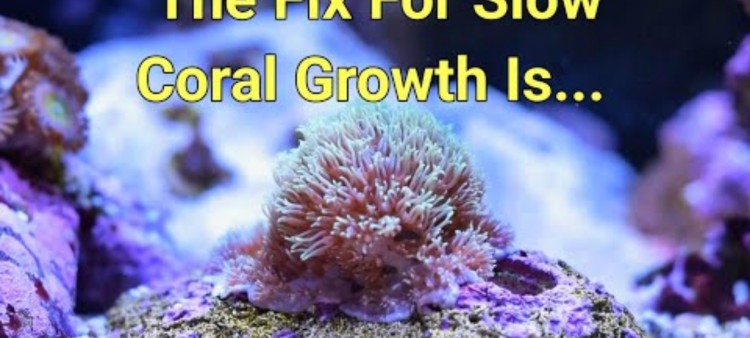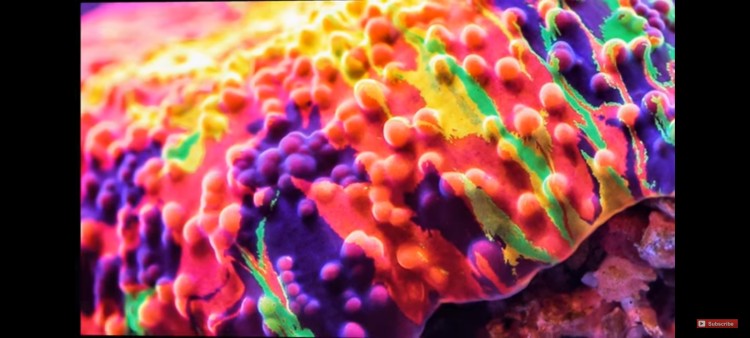7 Things Pro Reefers Don't Care About (That Newbies Do)
- Jul 09, 2022
- Anshika Mishra
- 253 0 0

To a newbie reefer, it might look like there are thousands of things you need to get perfect to make your tank a success. But, when you understand the hobby, it is much simpler than you first thought. And you realize that the red herrings you fixated on as a newbie no longer matter to you.
So, here are our top 7 things pro reefers don't care about that newbies do:
1. Slow Coral Growth
It is easy to assume that you fail in the hobby if your corals hardly seem to grow for months. But some coral takes time to settle and need an extended period of stagnant growth before they shoot up.
It is always worth ensuring that your water parameter is there or thereabouts and that you have sufficient flow and light for your corals. But, chasing growth will do more harm than good, and letting your tank find its groove is usually better.
2. Manicured Sand Bed
When you start a new aquarium, the sand bed is one of the prettiest parts of your tank, and it is only natural to want to keep it looking clean. But keeping a sand bed clean is a lot easier said than done.
Various critters will help to some extent, but the reality is that most of them will make little to no difference, and others will pile up your sand in places you don't want them to.
And apart from the fact that sand is almost sure to get dirty with algae over time when you turn up your flow to the level your corals require, the sand bed becomes one big dust cloud.
So, please don't fret about getting your sand bed perfectly manicured when you first set it up. It won't stay that way anyways.
3. Coraline Growth
When you set up a dry white rock, it can be pretty unappealing until it is covered in the only algae anyone wants, gorgeous purple Coraline algae.
And among other benefits, the presence of Coraline algae is a good indicator that your tank is ready to support stony corals. Unfortunately, many can take or leave the stuff while experiencing reefs and seeing caroline's benefits. If it spreads onto your glass, it is very difficult to scrape off, and it can cover and clog up your wear box and even your live rock.
And when it starts to increase, you can end up with tons of the stuff, at which point, like anything in the hobby, it starts to feel like a pest. So pretty as it is, it is not as pretty as corals, which is why we're all here.
Now, most Urchins will each Coraline algae, which might sound bad to you at first, but when you see how effective an Urchin can be at eating pest algae, you won't mind him nibbling on your purple bits as well.
4. Coral Death
Corals can live in the wild for hundreds of years, theoretically even forever. This is because they are very resilient animals and don't die for no reason.
So, when one coral dies in your tank, it is natural to want to fix the cause, and to be fair, it is always best practice to carry out a suite of tests when a coral dies to ensure all is well.
But, as survivable as corals are, sometimes, they die in our tank for reasons we can't establish when everything else is fine. So, if your test results moreor less checkout and most of your tank looks good, there is no need to start a full inquest or, even worse, make a raft of changes to try to prevent further losses.
More often than not, your attempt to fix one problem will create several issues further done the line.
5. Ropey Corals in the First Six Months
You will get ten different answers if you ask ten other people when you should add your first coral. But, one universal truth is that corals often don't do well in a new tank, and new tanks need time to establish themselves.
Whether it is nitrate or phosphate leveling off, good bacteria spreading, various types of algae competing for space, or any other biological and chemical processes we can't see or tell.
Corals don't enjoy the instability and competition that happens when you first set up a tank, and it is easy to think that they need your assistance to pull through. But, the opposite is often true. Those processes are parts of establishing a healthy environment that can support marine life, and your well-meaning efforts to help corals by changing your lighting spectrum or intensity, dosing trace elements, or adding coral food will often only serve to delay the establishing process or even worse throw it off and introduce changes for your corals to cope with.
If your corals don't look great or don't grow for months at a time in a new tank, they are probably just in survival mode, waiting for the conditions to settle so they can thrive.
Corals are patient animals, a valuable character trait often not shared by reef keepers.
6. LED Spectrum
Gone are the days when reef tank lighting adjustability was limited to on or off. Instead, LED lights to control every imaginable aspect of lighting, including 50 shades of blue.
Should I decrease the length of time my lights are on? Is blue light better for corals than white? Do I need moonlight? Am I wasting my time with a light that doesn't have proper UV? These are questions you won't hear pro reefers asking themselves.
Most LED lights come with templates the manufacturer will recommend for your particular tank type. And you will get the most joy by simply choosing that, turning the intensity down by half, so it doesn't bleach your corals, and walking away from the app.
If you don't like how templates make your tank look, turn all the blue and purple channels up to 100%, then adjust the white lights until they look good to your eyes, and lower the overall intensity down to 30%-40%.
Decreasing the green channel by 3% and increasing the indigo by 7% is not the solution to all your problems. And while the on-off functionality of old-school lighting isn't sexy, there is a reason why experienced reefers still swear by T5s and metal allies.
7. Pests
And the number one thing pro reefers don't care about that newbies do is what is often described as a pest. Astrina starfish, bristle worst, btrille stars, and most types of algae can strike fear into the hearts of new hobbyists. The first sign of bobble algae, colonial hydrides, or Aiptais anemones can be enough to make you think your tank is on the verge of a hostile takeover from an unstoppable enemy.
But most experienced reefers recognize that conditions that suit corals also suit various other kinds of marine life that we find less aesthetically pleasing.
No one wants a tank full of Aptasia, which doesn't mean you shouldn't take action to deal with undesirable pests.
It is just that the overwhelming majority of critters we hobbyists call pests are, in reality, simply minor irritants or just as likely something that will live alongside our lovely corals just fine and don't want an immediate smashing of the panic button.
In conclusion
Now, pro reefers, of course, have years of experience to differentiate between the impending doom of zoa-eating Nudibranch and a harmless albeit unusual-looking stone snail that will help keep your tank clean.
But really, the message of this article is that chasing perfection isn't the way to success is the hobby and constant interference on your tank is almost never the answer.







About author